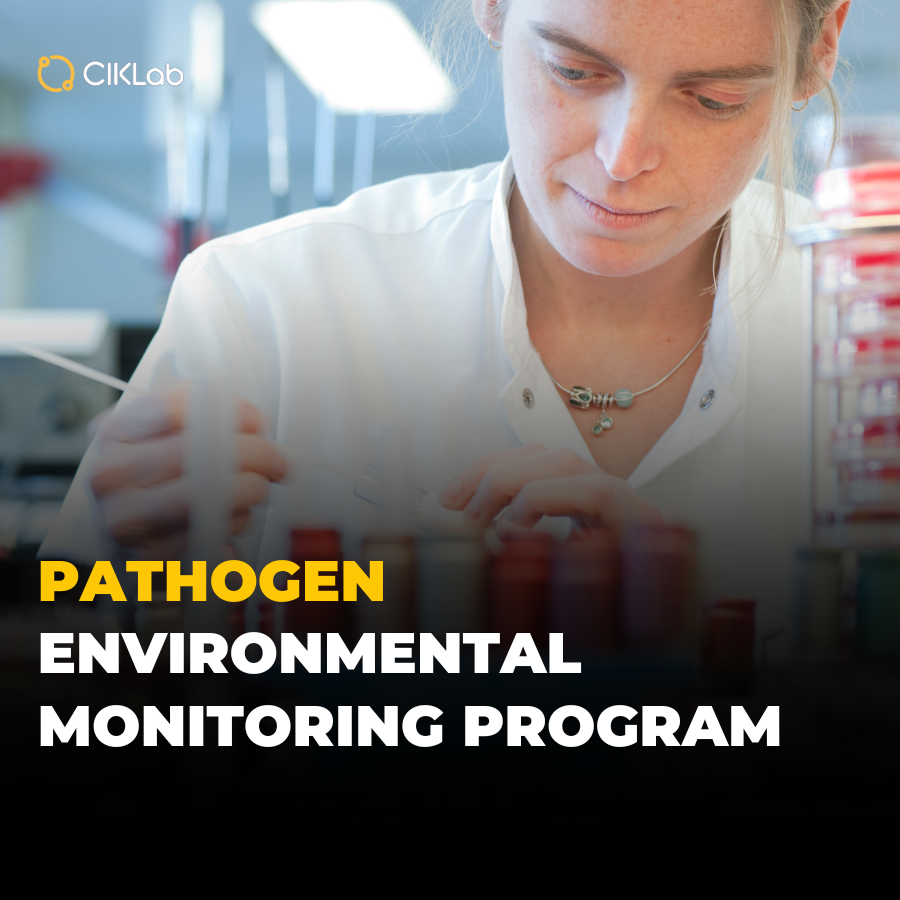Phycotoxins (marine biotoxins) represent a challenge for food safety. These toxins, produced by certain species of algae and phytoplankton, can contaminate various seafood products, posing a risk to human health.
Summary :
2) Classification of Phycotoxins
4) What Analysis Methods are used to quantify Phycotoxins ?
5) Serious incidents and notable cases attributed to phycotoxins
What are Phycotoxins?
Phycotoxins present in seafood are toxic substances produced by certain species of algae and phytoplankton. Approximately forty species produce phycotoxins that are toxic to humans.
How fo they enter the food chain ?
The process that introduces them into the food chain mainly occurs through Harmful Algal Blooms (HABs), also known as "red tides" or "blooms." These blooms occur when specific environmental conditions favor the rapid proliferation of specific algae species that produce toxins. Like other types of "natural" food contaminants, climate change plays a significant role in increasing red tides and the proliferation of toxic algae species. Changes in water temperature, ocean acidification, and changes in ocean currents promote the development of these harmful algal blooms and the prevalence of phycotoxins.
Which matrices are affected ?
The affected food matrices are seafood, particularly bivalve mollusks like oysters, mussels, and scallops, which are most likely to be contaminated. However, other fish and crustaceans can also accumulate these toxins if they consume algae or other contaminated organisms. The significant issue with this type of hazard is that most phycotoxins are stable and resist cooking well (thermostable or heat-resistant)
Classification of Phycotoxins
There are different types of phycotoxins, each having specific toxic effects on humans; they are classified based on these same toxic effects, some lipophilic, others water-soluble.
Paralytic Shellfish Poisoning (PSP)
PSP toxins are a group of neurotoxins mainly produced by dinoflagellates, such as Alexandrium spp. These toxins block the sodium channels of nerve cells, which can lead to paralysis. There are over 20 different analogs of PSP toxins.
The most toxic compound in this group is saxitoxin (STX).
Diarrhetic Shellfish Poisoning (DSP)
DSP toxins are produced by several species of algae, including Dinophysis spp. and Prorocentrum spp. These toxins can cause gastrointestinal disorders in people who consume contaminated shellfish.
The main compounds in this group are okadaic acid (OA), dinophysistoxins (DTXs), and pectenotoxins (PTXs), Azaspiracides (AZAs), Yessotoxins (YTXs).
Amnesic Shellfish Poisoning (ASP)
Domoic acid is a neurotoxin produced by certain diatoms of the genus Pseudo-nitzschia. This toxin is a glutamate receptor agonist, which can lead to excessive excitation of nerve cells. Intoxication can cause gastrointestinal disorders, neurological symptoms, and, in severe cases, short-term memory loss; brain damage can be irreversible.
Main compound: Domoic acid (DA)
Neurotoxic Shellfish Poisoning (NSP)
This is a type of food poisoning caused by the consumption of shellfish contaminated by certain neurotoxic toxins: palytoxins (PLTXs) and brevetoxins (BTX). These toxins are mainly produced by dinoflagellates of the genus Karenia, particularly Karenia brevis, which is frequently involved in "red tides."
Main compounds: palytoxins (PLTXs) and brevetoxins (BTX)
Ciguatera Fish Poisoning (CFP)
Ciguatera fish poisoning is a form of bio-food poisoning caused by the consumption of tropical and subtropical reef fish contaminated by ciguatera toxins. These toxins are produced by microalgae dinoflagellates of the genus Gambierdiscus and accumulate in the marine food chain.
Compound: Ciguatoxin
Regulation of Phycotoxins
Phycotoxin regulation can vary from one country to another, but in the European Union, for example, it is quite strict and is governed in particular by Regulation (EC) No 853/2004: setting specific hygiene rules applicable to foodstuffs of animal origin.
The health standards below apply to live bivalve mollusks according to Regulation (EC) No 853/2004
| Groupe | Regulation | |
| «Paralytic Shellfish Poison» (PSP) | Saxitoxines (eq saxitoxine di-HCL) | 800 µg/Kg |
| «Amnesic Shellfish Poison» (ASP) | Acide domoïque : | 20 mg/Kg |
| Acide okadaïque + dinophysistoxines pris ensemble | eq-acide okadaïque : | 160 µg/Kg |
| Yessotoxines | eq-yessotoxines | 3.75 mg/kg |
| Azaspiracides | eq-azaspiracides | 160 µg/Kg |
What Analysis Methods are used to quantify Phycotoxins ?
Analysis Methods:
The detection and quantification of phycotoxins in food products are generally carried out by liquid chromatography coupled with mass spectrometry (LC-MS/MS). For some toxins, methods based on bioassays, such as the mouse test, have traditionally been used but are gradually being replaced by more specific and sensitive techniques.
Standardized Methods :
NF EN 16204: Quantification of lipophilic algal toxins (toxins of the okadaic acid group, yessotoxins, azaspiracides, pectenotoxins) in shellfish and shellfish-based products by LC-MS/MS.
NF EN 14526: Determination of saxitoxin group toxin content in shellfish by HPLC with pre-column derivatization and by peroxide or periodate oxidation.
Saxitoxin (STX), decarbamoyl saxitoxin (dcSTX), neosaxitoxin (NEO), decarbamoyl neosaxitoxin (dcNEO), gonyautoxins 1 and 4 (GTX1,4; sum of isomers), gonyautoxins 2 and 3 (GTX2,3; sum of isomers), gonyautoxin 5 (GTX5, also called B1), gonyautoxin 6 (GTX6, also called B2), decarbamoyl gonyautoxins 2 and 3 (dcGTX2,3; sum of isomers), N-sulfocarbamoyl gonyautoxins 1 and 2 (C1,2; sum of isomers) and, subject to the availability of certified reference materials, N-sulfocarbamoyl gonyautoxins 3 and 4 (C3,4; sum of isomers) in mussels, oysters, scallops, and clams (raw).
Official Method 2005.06 by AOAC: HPLC-FLD for PSP toxins, official method, reviewed by the EU-RL-MB (European Reference Laboratory for Marine Biotoxins) - EURLMB SOP for the analysis of Paralytic shellfish toxins (PST) by pre-column HPLC-FLD according to OMA AOAC 2005.06 (2020).
Accredited Methods:
These are either derived from standards NF EN 14526 or NF EN 16204, but most of the accredited methods come from Anses, which is the National Reference Laboratory for Marine Biotoxins in France, for example: (ANSES / LSAliments / LSA-INS-0147).
Official Control Methods:
The official control methods for phycotoxins are described in the implementing regulation (EU) 2019/627, establishing uniform procedures concerning animal-origin products intended for human consumption.
| Group | Technic | Comments (UE) 2019/627 |
| Content of amnesic shellfish toxins (amnesic shellfish poison or ASP) | HPLC/UV |
or any other method validated and recognized at the international level. Authorized for screening purposes: Official Method 2006.02 of the AOAC, as published in the Journal of AOAC International, vol. 90, p. 1011 to 1027 (ELISA method) |
| Content of paralytic shellfish toxins (paralytic shellfish poisoning or PSP) | HPLC-FLD |
OMA 2005.06 of the AOAC, as published in the Journal of AOAC International, vol. 88, no. 6, p. 1714 to 1732 (Lawrence method) or any other method validated and recognized at the international level. In case of dispute, the OMA 2005.06 method of the AOAC applies. |
|
Detection of Marine Toxins Toxins from the okadaic acid group: Toxins from the pectenotoxin group: Toxins from the yessotoxin group: Toxins from the azaspiracid group |
(EU-RL-LC-MS/MS) |
Method of the European Union Reference Laboratory (EURL LC-MS/MS) and includes at least the following substances: a) toxins from the okadaic acid group: OA, DTX1, and DTX2, including their esters (DTX3); b) toxins from the pectenotoxin group: PTX1 and PTX2; c) toxins from the yessotoxin group: YTX, 45 OH YTX, homo YTX, and 45 OH homo YTX; d) toxins from the azaspiracid group: AZA 1, AZA 2, and AZA 3. Other methods are possible if they can detect at least the above analogs, and if they meet the performance criteria set out in the EURL LC-MS/MS method. These methods must have undergone intralab validation and have successfully passed tests conducted as part of a recognized efficacy testing program. |

Serious incidents and notable cases attributed to phycotoxins
One of the most publicized incidents involving phycotoxins is the contamination of scallops in Canada in 1987 by domoic acid, a phycotoxin responsible for ASP. Several people died and others suffered from permanent neurological sequelae as a result of consuming these shellfish.
Source: "Amnesic shellfish poisoning in the king scallop, Pecten maximus, from the west coast of Scotland," Journal of the Marine Biological Association of the United Kingdom, 1990.





